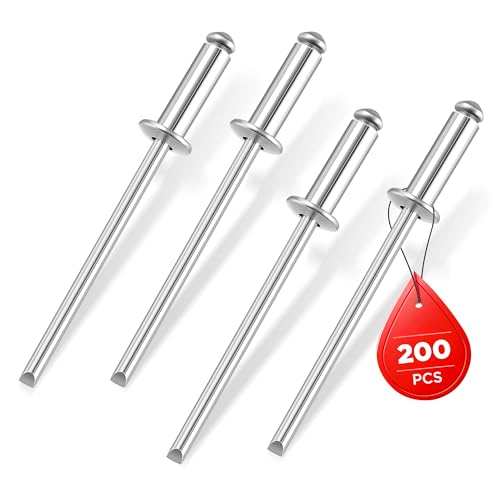richg99
Well-known member
Long, but you will learn something, so it might be worth it..... richg99
Ordering from Amazon... This is wild.
I found this quite interesting. I cannot imagine how they developed this system. Most have shopped Amazon at least once. Hope you find it interesting also and it will WOW you.
For those of you who worked in distribution businesses this is an eye-opener and for those of you who buy from Amazon, now you know why they can keep their prices down, ship accurately as ordered and quickly.
As the world's largest online retailer, Amazon needs somewhere to put all of those products. The solution?
Giant warehouses. Eighty to be exact. Strategically located near key shipping hubs around the world.
The warehouses themselves are massive, with some over 1.2 million square feet in size (111,484 sq. m).
And at the heart of this global operation are people (over 65,000 of them), and a logistics system known as Chaotic Storage.
Chaotic storage is like organized confusion. It's an organic shelving system without permanent areas or sections.
That means there is no area just for books or a place just for televisions (like you might expect in a retail store layout). The product's characteristics and attributes are irrelevant. What's important is the unique barcode
associated with every product that enters the warehouse.
Every single shelf space inside an Amazon warehouse has a barcode. And every incoming product that requires storage is assigned a specific barcode that matches the shelf space in which it will be stored. This allows free space to be filled quickly and efficiently.
At the heart of the operation is a sophisticated database that tracks and monitors every single product that enters/leaves the warehouse and keeps a tally on every single shelf space and whether it's empty or contains a product.
There are several key advantages to the chaotic storage system. First is flexibility with chaotic storage, freed-up space can be refilled immediately. Second is simplicity. New employees don't need to learn where types of products are located. They simply need to find the storage shelf within the warehouse. You don't need to know what the product is, just where it is. Lastly is optimization. Amazon must handle millions and millions of orders. That means that at any given moment there is a long list of products that need to be 'picked' from the shelves and prepared for shipment. Since there is a database that knows every product required for shipment and the location of each product inside the warehouse, an optimized route can be provided to employees responsible for fulfillment.
Since Amazon deals with such a wide variety of products there are a few exceptions to the rule. Really fast-moving articles do not adhere to the same storage system since they enter and leave the warehouse so quickly. Really bulky and heavy products still require separate storage areas and perishable goods are not ideal for obvious reasons.
In this storage system, a wide variety of products can be found located next to each other, a necklace could be located beside a DVD and underneath a set of power tools This arbitrary placement can even help with accuracy as it makes mix-ups less likely when picking orders for shipment.
Overall it's a fascinating system that at its core is powered by a complex database yet run by a simple philosophy. It's Chaotic Storage. There's no better way to put it.
Heck, I've been doing Chaotic Storage for 50 years or so. My desk at the office was clearly a fore-runner of Chaotic Storage. The Computer system that tracked where everything was ... my Brain (which worked better 30/40 years ago!).
Since I am retired, I've applied these methods to my garage and my workshop. I've failed somewhat since, in my shop, I do have a couple of racks along one wall full of screws, springs and other items. However, Chaos is slowly taking over. The tiny drawers with Wood Screws have gradually been filling with a few washers; machine screws and other similar devices. It won't be long for Chaos to complete its mission.
Thanks for sending this on. I am going to let my kids know that, after I am gone, my shop; boat; fishing tackle; and other items all were kept neat and complete for resale using a well recognized Chaotic Storage Method, approved by Amazon.
Ordering from Amazon... This is wild.
I found this quite interesting. I cannot imagine how they developed this system. Most have shopped Amazon at least once. Hope you find it interesting also and it will WOW you.
For those of you who worked in distribution businesses this is an eye-opener and for those of you who buy from Amazon, now you know why they can keep their prices down, ship accurately as ordered and quickly.
As the world's largest online retailer, Amazon needs somewhere to put all of those products. The solution?
Giant warehouses. Eighty to be exact. Strategically located near key shipping hubs around the world.
The warehouses themselves are massive, with some over 1.2 million square feet in size (111,484 sq. m).
And at the heart of this global operation are people (over 65,000 of them), and a logistics system known as Chaotic Storage.
Chaotic storage is like organized confusion. It's an organic shelving system without permanent areas or sections.
That means there is no area just for books or a place just for televisions (like you might expect in a retail store layout). The product's characteristics and attributes are irrelevant. What's important is the unique barcode
associated with every product that enters the warehouse.
Every single shelf space inside an Amazon warehouse has a barcode. And every incoming product that requires storage is assigned a specific barcode that matches the shelf space in which it will be stored. This allows free space to be filled quickly and efficiently.
At the heart of the operation is a sophisticated database that tracks and monitors every single product that enters/leaves the warehouse and keeps a tally on every single shelf space and whether it's empty or contains a product.
There are several key advantages to the chaotic storage system. First is flexibility with chaotic storage, freed-up space can be refilled immediately. Second is simplicity. New employees don't need to learn where types of products are located. They simply need to find the storage shelf within the warehouse. You don't need to know what the product is, just where it is. Lastly is optimization. Amazon must handle millions and millions of orders. That means that at any given moment there is a long list of products that need to be 'picked' from the shelves and prepared for shipment. Since there is a database that knows every product required for shipment and the location of each product inside the warehouse, an optimized route can be provided to employees responsible for fulfillment.
Since Amazon deals with such a wide variety of products there are a few exceptions to the rule. Really fast-moving articles do not adhere to the same storage system since they enter and leave the warehouse so quickly. Really bulky and heavy products still require separate storage areas and perishable goods are not ideal for obvious reasons.
In this storage system, a wide variety of products can be found located next to each other, a necklace could be located beside a DVD and underneath a set of power tools This arbitrary placement can even help with accuracy as it makes mix-ups less likely when picking orders for shipment.
Overall it's a fascinating system that at its core is powered by a complex database yet run by a simple philosophy. It's Chaotic Storage. There's no better way to put it.
Heck, I've been doing Chaotic Storage for 50 years or so. My desk at the office was clearly a fore-runner of Chaotic Storage. The Computer system that tracked where everything was ... my Brain (which worked better 30/40 years ago!).
Since I am retired, I've applied these methods to my garage and my workshop. I've failed somewhat since, in my shop, I do have a couple of racks along one wall full of screws, springs and other items. However, Chaos is slowly taking over. The tiny drawers with Wood Screws have gradually been filling with a few washers; machine screws and other similar devices. It won't be long for Chaos to complete its mission.
Thanks for sending this on. I am going to let my kids know that, after I am gone, my shop; boat; fishing tackle; and other items all were kept neat and complete for resale using a well recognized Chaotic Storage Method, approved by Amazon.


































![411-Piece Fishing Gear Accessories Kit, [2025 NEW] Tackle Box with Pliers, Fish Lip Grips,Tackle Storage Trays, Hooks, Weights, Jig Heads, Swivels, 21 Pre-Made Rigs – Fishing Gear for Lures Fishing](https://m.media-amazon.com/images/I/51raBrzMU+L._SL500_.jpg)





















